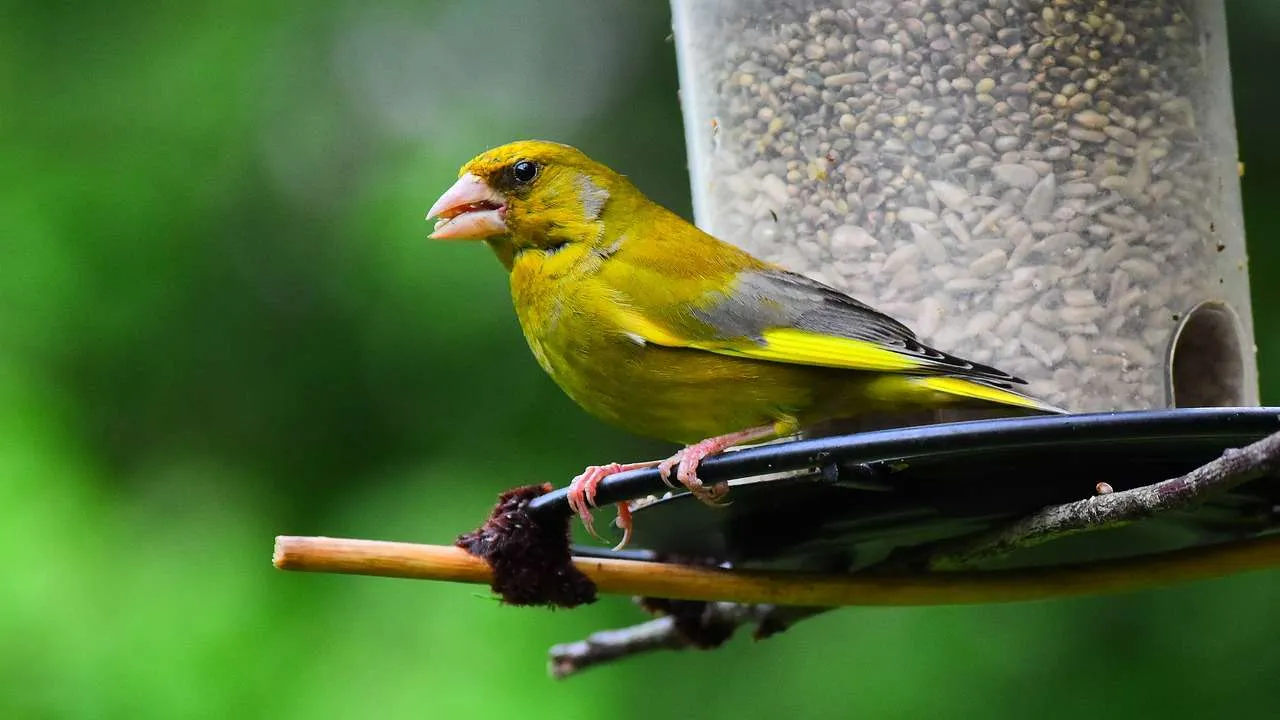The red-headed parrot finch (Erythrura Psittacea), also known as the red-throated or red-faced parrot finch, can be found naturally in New Caledonia grasslands or open country bordering forested areas. They are vivacious, energetic little finch; everything they do is done with gusto.
Their size is approximately 12.5 cm or 5 inches and the average weight is approximately 15 grams. The coloring characteristics are red face, upper breast, rump and tail, the rest of the body is parrot green; eyes are a dark brown; black beak and gray-brown legs; the female is slightly duller in color than her male counterpart.
As this species is monomorphic (both sexes look the same), it can be quite challenging in determining if you have a true pair. I have read reports of breeders being able to tell the difference between male and female by the loud, high pitched, trill songs; that the males are bigger in size, or the red feathers on the male extend past the corner of the eye, among various other observations. However, I couldn’t say with any certainty that any of these techniques in visual sexing are accurate, other than surgical sexing or if your pair actually produces and hatches a clutch.
As the red-headed parrot finch are very active birds, they need to have plenty of space in which to fly. If they are kept in an outside aviary, please be aware to take precautions to protect them from wind and cold, although they can be acclimated to cooler outdoor temperatures. Their energy should not deter those that have an indoor aviary or someone with limited space. For those with limited space, a cage 4 feet long by 2 feet deep and 2 feet wide is sufficient for a pair. When allowing for space, keep in mind they do have a tendency to get heavy, hence the need for plenty of exercise. Many breeders and enthusiasts keep the red-headed parrot finch in a mixed aviary. Generally, they are not aggressive towards other finches, however, there can be an exception to the rule.
Make sure you provide clean fresh water daily for bathing. One of their greatest enjoyments is their daily bath, quite often several times a day. My Bijoux bathes with much gusto, water is often all over the floor of the flight cage and room. Generally, I would suggest lukewarm water for bathing, however, each of my birds get much more enjoyment in cold water. I have read about others who have found their red-headed parrot finches prefer ice cold water to bathe in as well. When housed in a mixed aviary, other finch species often imitate the red-headed parrot finches bathing activity.
Dietary requirements are very important. As this is such an energetic bird, they require a very well-balanced diet. They will eat a variety of seeds, greens, vegetables and fruits, hard-boiled eggs, and mealworms. They are generally not too picky of the foods presented to them, although some greens may take them time to get used to. A good barometer in the amount fed is energy in equals energy out. Again, eating is also done with much gusto, don’t be surprised if your red-headed parrot finch is a voracious eater.
If you are breeding your red-headed parrot finches, they like large wicker nests, although often any nest is accepted. In the wild they may choose cracks in walls, holes in fences, to a bush. There seems to be differing opinions on who exactly is the primary nest builder, the male, hen or both. Both male and hen will incubate the eggs, of which 4-5 is laid. Incubation period is approximately 13 days, the young being weaned at 25-30 days.
If you are looking for a vivacious, energetic, smart, enjoyable finch to add to your aviary, the red-head parrot finch is definitely one to consider. They will give you hours of enjoyment, just watching their antics and behaviors.
